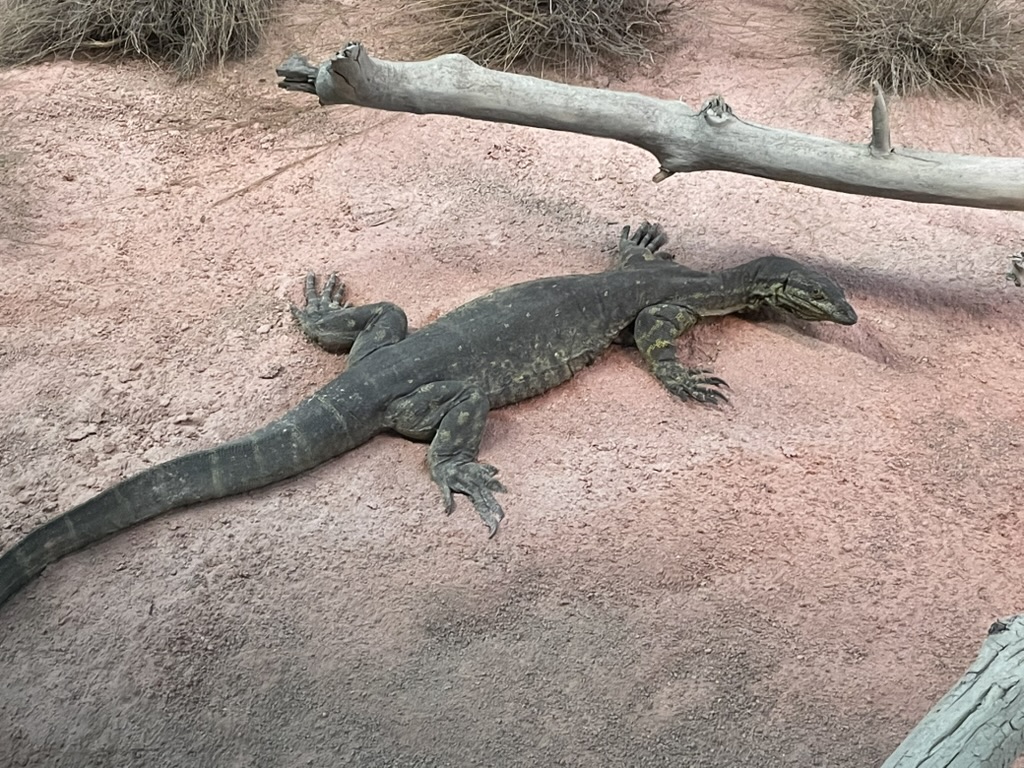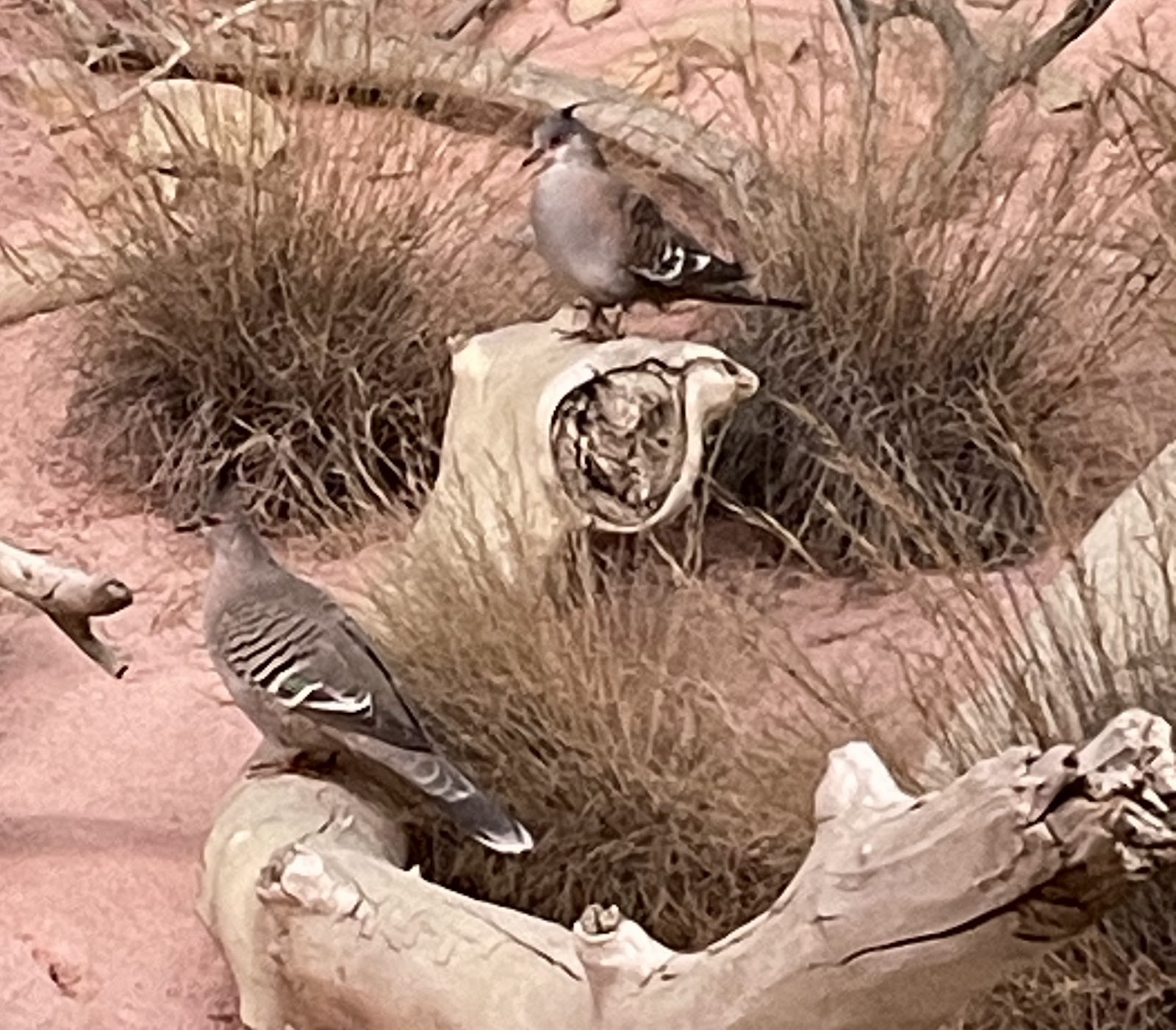One unique diorama at the Denver Museum of Nature and Science is in the Australia/South Pacific Islands Hall. The uniqueness is that I think this is the only diorama that has paintings of people in the background. This diorama may be called "The 1982 Walkabout Feast"... at least there's a nearby plaque with that phrase. Or perhaps a dinner called a "walkabout feast" was used to generate funds for the renovation. Unclear.
 |
The phrase "walkabout feast" probably needs review. I found this reference: "‘Walkabout’ for many First Nations people is a contentious word and considered an archaic colonial term. Its use by non-Aboriginal people is considered inappropriate."
|
 |
| There are 3 Indigenous Australians in the background, presumably hunting. There is no context given to indicate Indigenous Australians were involved this representation of their culture, nor is there reference to whether the background includes a depiction of sacred sites. |
 |
| The flora and fauna for this diorama come from central Australia, commonly called the "Outback." |
 |
| Map prepared by Hans Braxmeier. |
In 1949, Denver Museum of Natural History Director Alfred M. Bailey and others undertook their first field expedition to Australia to collect specimens for this diorama. Additional collecting trips were made in 1952, 1954, and 1958.
The star of the show? Red kangaroos (Macropus rufus). Red kangaroos are the largest of the kangaroos, and are the world's largest marsupial.
Of course, ecosystems don't tend to have a single species, and this diorama represents a range of plants and animals native to this area.
_(8692622586).jpg) |
| A photo of a frilled lizard. |
 |
The galah (Eolophus roseicapilla), is sometimes called the pink and grey cockatoo or rose-breasted cockatoo. It seems like the individual near the top is displaying a crest (see below).
|
 |
| These small birds, pained in the background, are budgerigars (Melopsittacus undulatus), also known as common parakeets. |
 |
Prior to being renamed in 1995, the ghost gum tree, Corymbia papuana, was formerly known as Eucalyptus papuana. This name is in need of correction.
|
 |
The bushy tree in the background is Acacia aneura, commonly known as mulga. In the foreground is a termite mound. |
 |
| I tried to locate this mountain with a Google Image search. Google's AI gave me this response: "This is not in Australia. It's Madera Canyon in Arizona, United States." However, I've learned that the mountain is called Haast Bluff (Ikuntji), and is located at the northern end of the McDonnell Range. |
 |
| Second floor. |
Note: The postings on this site are my own and don’t necessarily represent positions, strategies or opinions of the Denver Museum of Nature & Science.






_(8692622586).jpg)




















Comments
Post a Comment